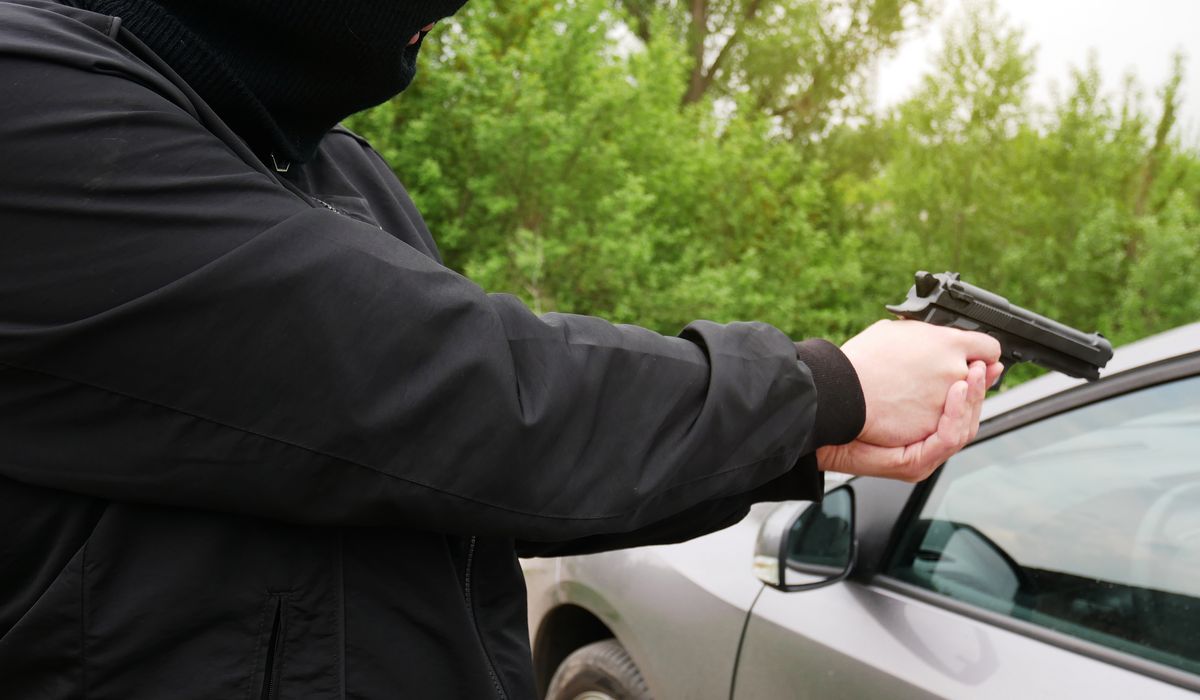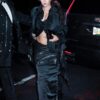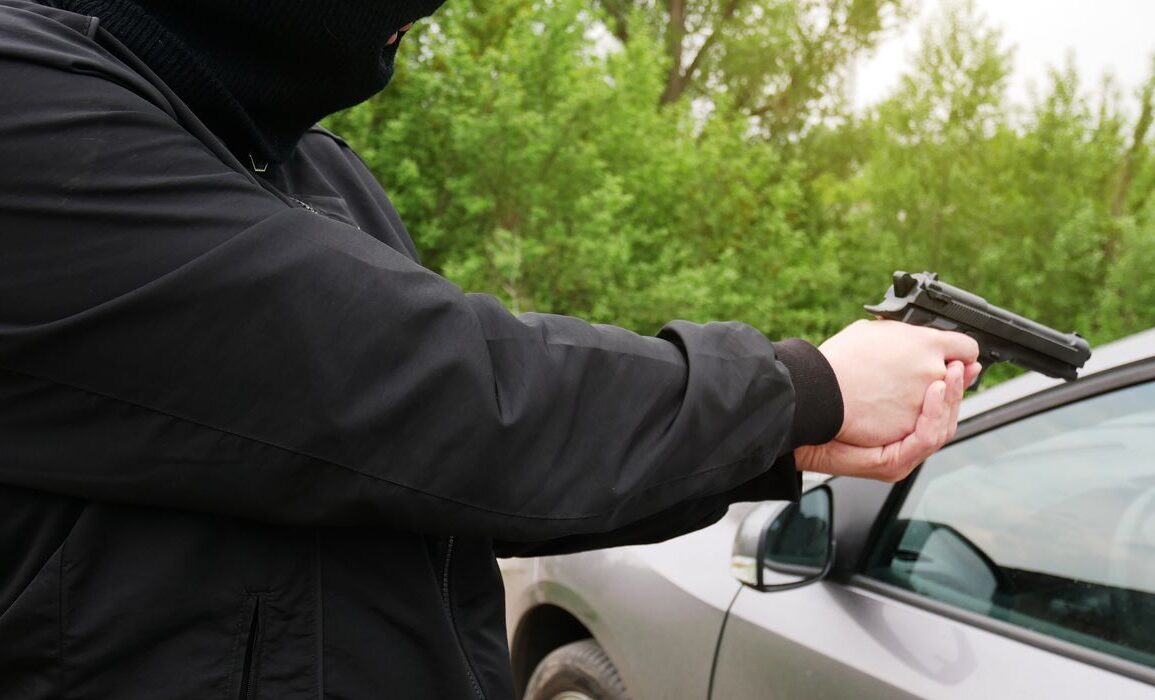
Ski masks are undergoing a rebrand, and criminals couldn’t be happier.
The balaclava-like “shiesty” first popularized by rappers are now enjoying some social acceptance thanks in part to new standards brought on by COVID-19.
But political and civic leaders see the provocative masks as a public safety hazard that emboldens both petty thieves and armed muggers to fearlessly defy the law.
“Too many crimes are being committed by individuals who are taking advantage by wearing a full-face ski mask to hide their identity,” Tio Hardiman, executive director of the national peacemaking organization Violence Interrupters in Chicago, told The Washington Times. “It’s something like out of a horror movie for people, because carjackers and robbers are terrorizing entire communities.”
Masked assailants have been wreaking havoc all over the country.
Dozens of thieves concealed their faces as they overran stores in Philadelphia last month as looters ransacked a Footlocker, a Lululemon and other establishments.
Police were able to arrest over 70 people in connection with the chaotic raids.
Three masked carjackers stole Rep. Henry Cuellar at gunpoint in the District last week. The Texas Democrat was unharmed and his car was recovered shortly, but all three suspects, who are thought to be teenage boys, remain at large.
A ski mask-wearing cyclist rode up to an elderly man in New York City and killed him with a point-blank gunshot to the head in front of his wife. Police said they have yet to arrest a suspect in the Sept. 17 slaying.
The masks encourage criminals to act even more brazenly, according to Mr. Hardiman, who said it will only be stopped when politicians “get some backbone” and ban the clothing item.
One local politician in Philadelphia looks to accomplish that in the coming months.
Councilmember Anthony Phillips, who represents the city’s northern 9th District, put forward legislation to bar people from wearing ski masks and other full-face coverings in a variety of public spaces — schools, daycares, recreation centers, public transit and city-owned parks and buildings.
The punishment is a $250 fine if caught wearing the mask in one of the prohibited areas, and a $2,000 fine if caught wearing a mask while committing a crime.
Ten of Mr. Phillips’ council colleagues have co-sponsored the legislation, giving it a strong chance to pass this fall.
The councilmember told The Times he is confident the ban will bring down crime because it will intensify the social stigma around wearing the masks.
Individual mom-and-pop stores around the city already forbid masked customers from coming to their business, Mr. Phillips said, and Philadelphia’s SEPTA transit system implemented its own ban back in June after a masked shooter killed a 15-year-old on a bus.
“What this piece of legislation does is it signals to the families across the city of Philadelphia … that we are taking a proactive step to enforcing the idea that people cannot walk into public spaces that are city-owned with a mask,” Mr. Phillips said.
Concerns have been raised that legislation targeting the masks will criminalize the Black teens and young men who predominantly wear them to keep up with the latest fashion.
Kristin Henning, a professor at Georgetown University law, told WHYY in Philadelphia that cracking down on the ski masks will have law enforcement singling kids out over “normal adolescent fads and trends.”
But the source of the current international craze around ski masks does have criminal roots.
The “shiesty” nickname for the ski masks is taken from rapper Pooh Shiesty, who helped popularize the accessory with the music video for his biggest hit “Back in Blood” nearly three years ago. Pooh Shiesty is currently serving time in federal prison for his involvement in a Florida robbery.
Wearing a shiesty has become synonymous with the subgenre of drill rap, which takes cues from the antagonistic gangsta rap genre. The masks are thought to protect a drill rapper’s identity from being used against them by prosecutors, such as Aisha Braveboy in Prince George’s County, Maryland.
Ms. Braveboy said in July that these songs go beyond mere creative expression and can sometimes describe a crime that actually took place.
She shared that opinion after a court hearing about two rappers who were killed in a June shootout. Baby K, the 15-year-old who is accused of trying to murder a boy on a county school bus in May, was also active in the drill rap scene.
Still, donning a ski mask has ties to the D.C. area that predate the hype around the aggressive rap genre.
Drince, a 23-year-old videographer who shoots music videos for local artists, said the masks have been part of the culture in the District of Columbia and Prince George’s his entire life.
It first started with rappers wearing rolled-up masks atop their heads, and it trickled down into street fashion from there. Drince said what changed was the onset of COVID-19 when public health authorities demanded people cover their faces for fear of spreading the novel coronavirus.
That gave people an excuse to start pulling the masks down and indulging in the deviant behaviors often celebrated by drill rappers.
“They shouldn’t have done that for COVID,” Drince told The Times. “I remember they would let people wear bandanas around their face. That can also sometimes represent gang activity.”
But the masks are catching on with people who’ve had no contact with the law — particularly children.
Youssef Abdelwahad, a Philadelphia teacher who also sells the masks under his A-Rag Apparel brand, said he’s seeing young boys of all backgrounds gravitate toward the shiesty.
That’s in part because they’ve become so prevalent, with designer brands such as Prada making their own versions and athletes such as Washington Commanders player Chase Young wearing them in public.
So the shiesty-maker is using this opportunity to push positive messages with his wares.
One of his offerings, the Ink Shiesty, advocates for people to seek out knowledge, just as Muhammad advocated for in the Quran. Another variation, the Sahara Shiesty, pays homage to the massive African desert that shaped the continent’s development throughout history.
Mr. Abdelwahad makes his masks in the patterns seen on keffiyehs, or head scarves, that men in Arab countries typically wear. It gives his shiestys a unique appeal to those who may not relate to the crime-ridden lifestyle drill rappers are a part of.
“The super nerdy Pakistani kid — like very wealthy or affluent kids that I see at these Islamic conventions — they want one so bad, even though they’re the last people to commit crime,” Mr. Abdelwahad told The Times. “There’s just something about it that’s enticing to wear.”
Some of those kids say they don’t get ski masks to live out their criminal aspirations, but instead to protect themselves from becoming a victim.
One girl told Philadelphia’s local ABC affiliate WPVI-TV that teens are wearing the mask so thugs can’t identify them out on the street.
Mr. Hardiman, the anti-violence activist in Chicago, said he likens that justification to young people saying they need to carry a gun illegally so they can fend off would-be assailants. He thinks that’s an excuse for them to partake in criminal behaviors if they get the itch.
Mr. Phillips on the Philadelphia city council, said the masks are giving Black America more broadly a bad name.
“The mask is a part of criminal culture, it’s not a part of Black culture,” he said. “Unfortunately, some of our young black men and women — who are decent individuals — have been confused with what’s actually Black culture versus criminal culture.”
This post was originally published on this site be sure to check out more of their content.









